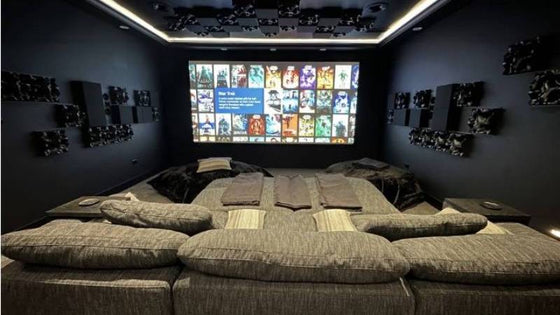Creating a system you love shouldn't be difficult. The Acoustic Frontiers blog is here to help.

There are many ways to integrate subs into your two channel system. We do not believe in running your speakers “full range”, bringing the sub in where the speakers roll off, though if you really want to do that then see our article on how to do it.
We’re advocates of actively rolling off the bass to your speakers, combining the left and right signals to mono, and feeding to one, or preferably multiple subwoofers.
Running speakers full range with subs coming in underneath limits your choice of crossover point for the subs, and if your speakers are ported can result in severe integration challenges due to phase cancellation around the crossover point.
Actively rolling off the bass to your main speakers will improve sound quality by:
With all that said, here are three ways you can integrate subs!
This is a device that goes into your signal path between pre and power amp, or in a tape loop in your integrated. We like the JL Audio CR-1. Another option is the Bryston 10B-SUB.

These crossovers let you choose the frequency and slope for the crossover and have great sound quality. They are perfect for a reference quality system or if you are wary of digitizing the output of your turntable.
The JL is comprehensive enough to allow integration into a home theater system, can sum left and right to mono internally, and is relatively easy to set up (assuming you have an acoustic measurement system like the XTZ Room Analyzer II and some knowledge).
Here’s a good review of the JL Audio CR-1 at Ultra Audio.
These devices work in the digital domain (therefore digitize all incoming signals) and provide significant flexibility in setting up crossover point and slope. We like the products from DEQX and Trinnov, both of which provide functionality far beyond simple sub crossovers.

The DEQX processors like the HDP-4 and PreMATE are fully featured digital pre-amps with onboard DACs that include speaker / room correction. They are best employed as the nerve center of your system, fed with a digital source and feeding a power amplifier. Here’s the Stereophile review of the PreMATE.
These solutions are definitely more complex than the active analog crossovers discussed above, and to properly optimize all their feature you’ll generally need the support of a knowledgeable dealer.
This type of subwoofer crossover resides on a PC or Mac and is performed by playback software such as JRiver Media Center or Pure Music. Both have decent onboard crossover functionality that is sufficient to get good integration.
Since you have split the left and right signals inside the computer you now need a multi-channel DAC to feed your system. The volume control is best done in the DAC, unless you have a multi-channel pre-amp. The DAC feeds the left/right power amps and the subs.
Most multi-channel DACS are not particularly user friendly and don’t have basic features like output muting when power is disconnected.
The two units to look at if you are interested in this approach would be the ExaSound E28 and maybe the new Merging NADAC. We’ve sold a few E28s and they work well for this purpose.

In terms of complexity I’d say this the most challenging to setup and maintain, mostly because it involves using a general purpose computer. Typical symptoms are no sound, requiring a computer reboot.
One major downside is that you are limited to the sources on the computer, so no turntable or CD player or cable box, unless you get really geeky and figure out how to get those into the computer. On the plus side the same computer can also work as a music server.
These three methods of integrating subs into a two channel system are our favorites, but I am sure there are many other approaches.
If you have a favorite method to integrate subs not covered here, or other recommended products please share by adding a comment below.
Please also feel free to ask us advice on what may be best for your situation!
This media room was intentionally designed to feel like part of the home—not a separate, tech-heavy space. Through careful acoustic planning, equipment integration, and final calibration, we achieved a room that is both beautiful to live in and immersive to experience.
"No other subwoofer system I’ve owned even comes close to what this room delivers. Reaching out to Acoustic Frontiers was one of the best decisions I’ve made—I highly recommend working with them if you want to get the most out of your theater."

Nyal Mellor, Founder, Acoustic Frontiers



Nyal Mellor
Author